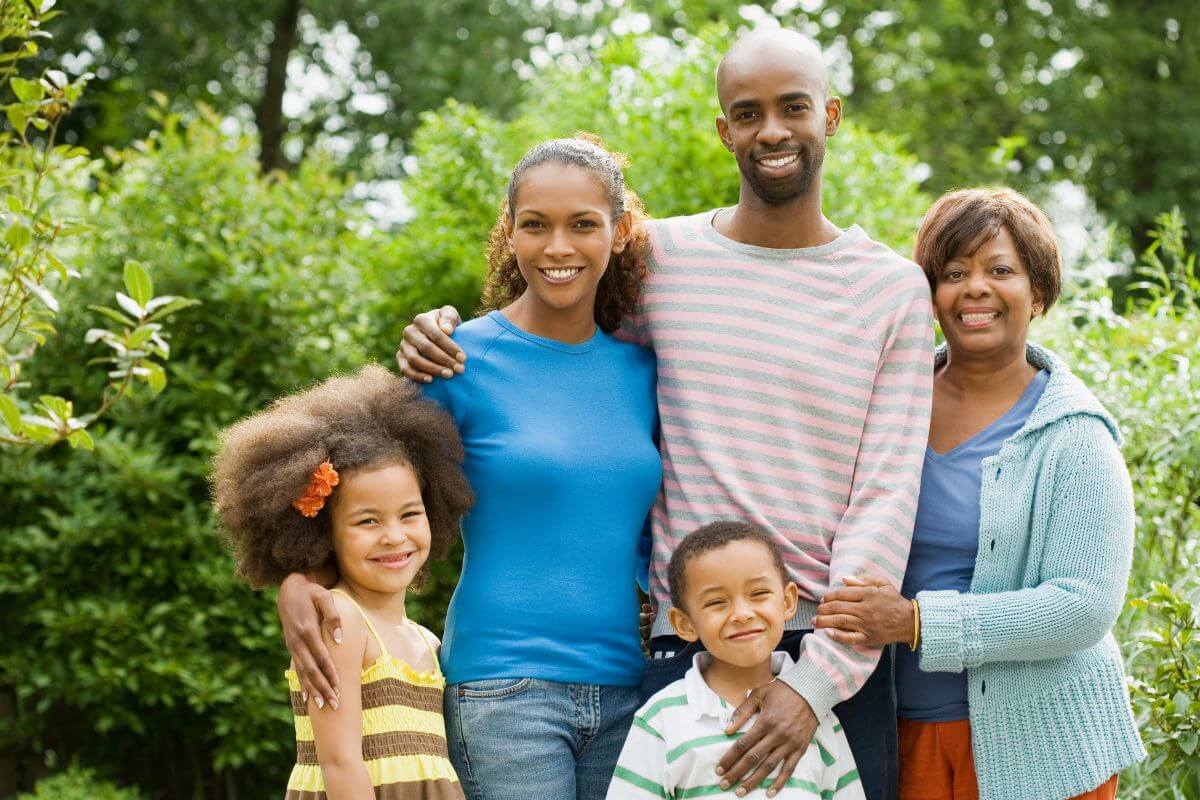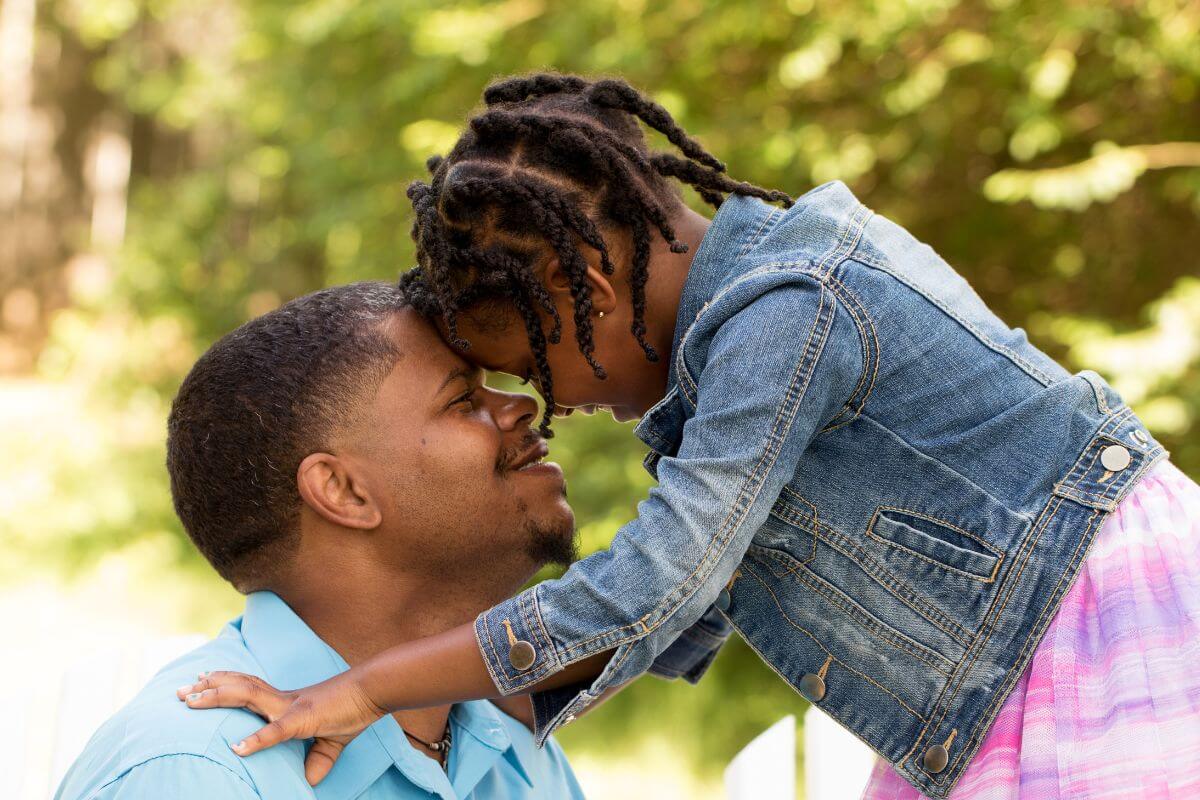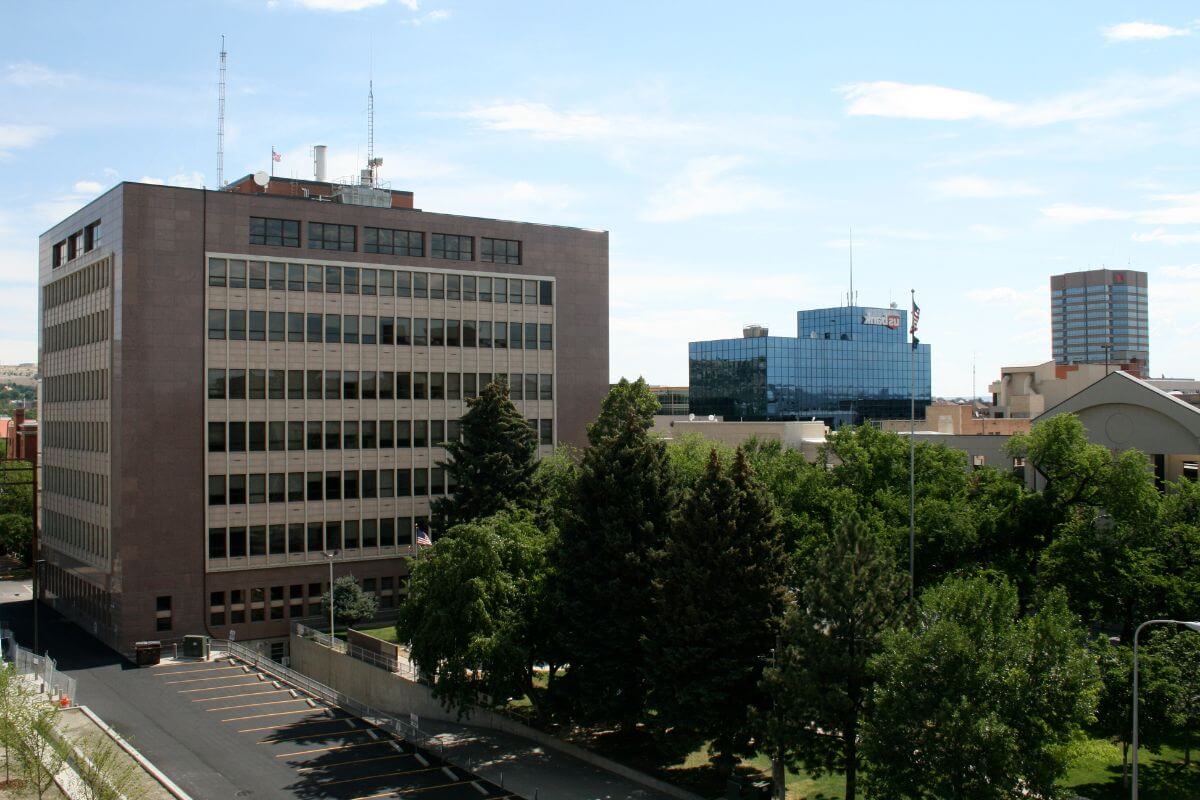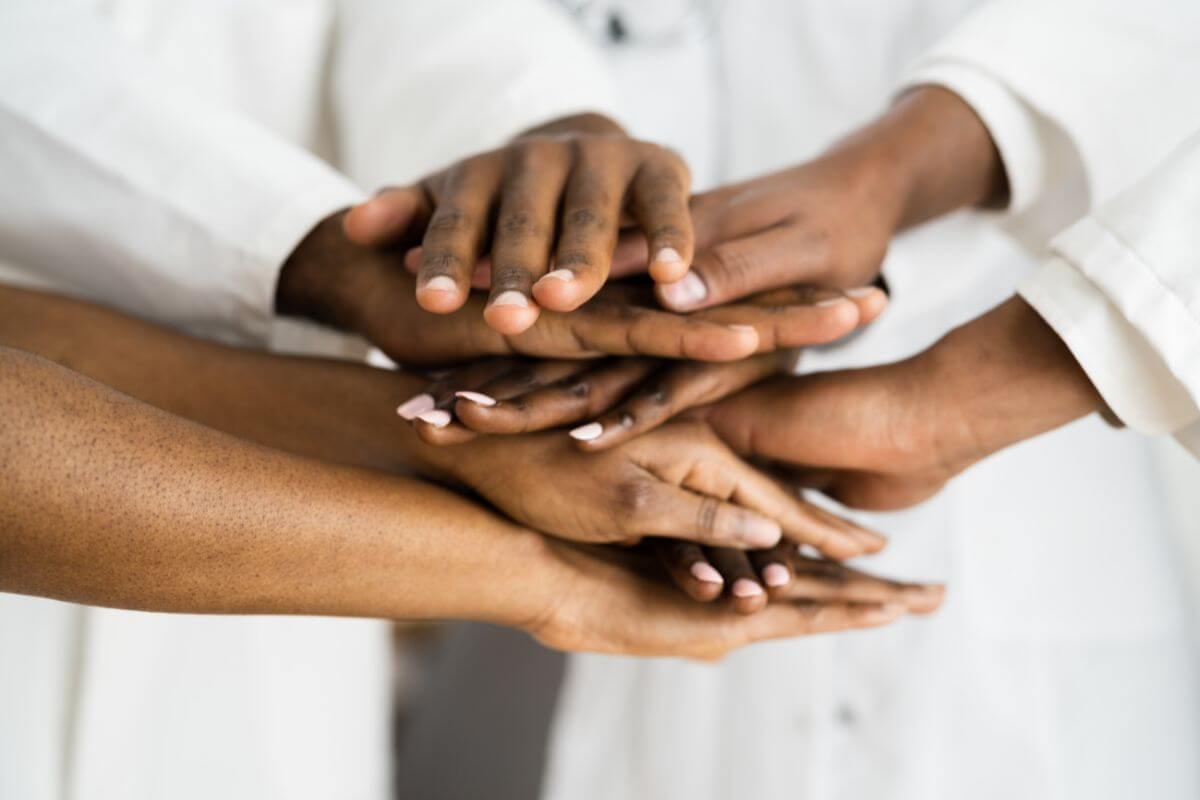Hey there!
Have you ever wondered about Montana’s African American community?
Well, you’ve come to the right place!
You might be thinking, “Wait a minute, Montana doesn’t exactly come to mind when I think about African American communities.”
And you’re absolutely right! Montana is known for its vast landscapes, stunning mountains, and outdoor adventures, but its African American population often goes unnoticed.
From bustling city life to close-knit neighborhoods, Montana’s African American population has carved out a unique space for themselves in the Big Sky Country.
Whether you’re an out-of-towner planning a visit or a Montana native looking to learn more about your fellow community members, this article has got you covered.
- Related article: Montana Culture and Lifestyle
Get ready to embark on a journey through the rich history, vibrant culture, and thriving African American community of Montana.
Montana African American Community Overview

Montana is home to a diverse tapestry of cultures, and the African American population is an integral part of this unique fabric.
As of 2022, Montana boasts a total population estimate of approximately 1,122,867 people. But let’s get down to business and focus on our African American community.
African American Population Numbers

According to the most recent data from the U.S. Census Bureau, as of July 1, 2022, the population of Montana stands at approximately 1,122,867 people, with a wide range of backgrounds and cultures.
Now, let’s talk numbers for a moment.
Amongst this colorful mix, the Black or African American alone population in Montana stands at 0.6%.
While this percentage may seem small on the surface, it represents a vibrant community that contributes its own unique flavor to the Montana experience.
Their presence enriches the cultural fabric of this state, adding depth, diversity, and perspective.
But it goes beyond statistics – it’s about the rich stories, traditions, and experiences that the Black community here shares.
Montana’s African American residents are a driving force in our social and cultural scene. They make valuable contributions across a spectrum of areas, igniting creativity and innovation in art, music, literature, and beyond.
And let’s not forget the importance of representation and inclusion.
In a state where the American majority population is predominantly White, the presence of diverse communities, including African Americans, Native Americans, Asian Americans, and others, foster a spirit of inclusivity and understanding.
It’s these stories and experiences that make Montana the uniquely vibrant and welcoming place that it is today.
African American Breakdown by County

In Montana, the African American population is a small but significant part of the state’s demographic tapestry.
According to the U.S. Census Bureau Race and Ethnicity Report of 2020, the African American population alone in Montana is 0.5% of the total population.
While this figure may seem modest, it represents a vibrant and diverse community that contributes to the cultural fabric of the state.
| County | Percentage | Number of People |
| Yellowstone County | 0.8% | 1,309 |
| Cascade County | 1.4% | 1,196 |
| Missoula County | 0.6% | 752 |
| Lewis and Clark County | 0.4% | 282 |
| Flathead County | 0.3% | 280 |
| Silver Bow County | 0.4% | 131 |
| Ravalli County | 0.2% | 94 |
| Custer County | 0.6% | 71 |
| Powell County | 1.0% | 67 |
| Lake County | 0.2% | 64 |
| Richland County | 0.5% | 63 |
| Park County | 0.4% | 62 |
| Hill County | 0.3% | 46 |
| Lincoln County | 0.2% | 37 |
| Toole County | 0.6% | 32 |
| Roosevelt County | 0.3% | 32 |
| Beaverhead County | 0.3% | 29 |
| Deer Lodge County | 0.2% | 23 |
| Sanders County | 0.2% | 23 |
| Carbon County | 0.2% | 22 |
| Carbon County | 0.2% | 22 |
| Teton County | 0.3% | 21 |
| Fergus County | 0.2% | 21 |
| Rosebud County | 0.2% | 20 |
| Glacier County | 0.1% | 20 |
| Stilwater County | 0.2% | 17 |
| Broadwater County | 0.3% | 17 |
| Jefferson County | 0.1% | 16 |
| Valley County | 0.2% | 15 |
| Madison County | 0.2% | 15 |
| Sheridan County | 0.4% | 14 |
| Meagher County | 0.7% | 13 |
| Blaine County | 0.2% | 13 |
| Bighorn County | 0.1% | 11 |
| Golden Valley County | 1.2% | 10 |
| Chouteau County | 0.2% | 10 |
| Sweetgrass County | 0.2% | 8 |
| Musselshell County | 0.1% | 7 |
| Fallon County | 0.2% | 5 |
| Pondera County | 0.1% | 5 |
| Philips County | 0.1% | 5 |
| Liberty County | 0.1% | 2 |
| Prairie County | 0.2% | 2 |
| Wibaux County | 0.2% | 2 |
| Treasure County | 0.1% | 1 |
| Jefferson County | 0.1% | 1 |
| McCone County | 0.1% | 1 |
The county with the highest African American population is Yellowstone County, with 1,309 individuals.
Other counties with notable African American populations include Cascade County with 1,196 individuals, Golden Valley County with 10 individuals, and Powell County with 67 individuals.
The African American population in Montana, spread across various counties, brings unique perspectives and enriches the state’s cultural landscape.
Their contributions span various fields and sectors, including art, music, literature, and more.
This diverse community fosters a spirit of inclusivity and understanding within the state, as Montana embraces people from all walks of life.
While the African American population may be small in overall numbers across counties in Montana, their presence is felt and their voices are heard.
Their stories, traditions, and experiences shape and strengthen the social and cultural tapestry of our beautiful state.
Montana’s African American Heritage

Montana’s African American heritage holds historical significance and encompasses a rich tapestry of contributions, individuals, and events that have shaped the state’s cultural landscape.
During the 1800s, African American individuals and families began to settle in Montana, facing both challenges and opportunities.
One such example is Emma Wall and John Orr, who faced racial discrimination and violence on their wedding night in Glendive during this era.
Yet, even in the face of such challenges, African American miners managed to form their own mining enterprises, such as the Afro-American Mining and Milling Company, within Montana throughout the 1890s.
This not only demonstrated their resilience but also contributed significantly to the state’s economic growth.
The early 1900s saw the rise of African American advocacy in Montana.
“The Colored Citizen,” Montana’s 1st black newspaper, was published in Helena, advocating for the city’s designation as the state capital.
The Afro-American Club of Butte and A.J. Campbell Afro-American Club in Anaconda were also founded during this time, fostering social and cultural activities within the community.
The 1910s were marked by incredible feats, as African American soldiers from the 25th Infantry stationed at Fort Missoula embarked on a daring bicycle journey from Missoula to St. Louis, covering approximately 1,900 miles in just 40 days.
However, discriminatory laws, such as those banning interracial marriage, marred this period of achievement.
The 1930s brought African American workers to Montana through the Civilian Conservation Corps (CCC), contributing to significant infrastructure projects.
Notably, Alice Pleasant, known affectionately as Ma Plaz, operated a popular restaurant in Havre, adding a flavorful touch to the state’s culinary landscape.
The 1950s witnessed the influential role played by Montana Senator Mike Mansfield, who championed the Civil Rights Act of 1964.
Daniel P. Brockman became the 1st African American admitted to the Montana Veterans’ Home during this time.
In the 1970s, Geraldine Travis made history as Montana’s 1st African American legislator, paving the way for future generations to follow.
Moving into the 1990s, Montana officially declared a holiday in honor of Martin Luther King Jr., recognizing his significant impact on civil rights.
The state’s African American community also rallied in protest against the Rodney King trial verdict and the LA riots, demonstrating their ongoing commitment to justice and equality.
As we reach the 2000s, Census data shows an increase in Montana’s African American population, further diversifying the state’s communities and strengthening their cultural heritage.
These highlights, steeped in the struggles and contributions of African Americans in Montana, underscore the resilient spirit and enduring legacy of this vibrant and dynamic community.
From settling and mining to civil rights activism and cultural endeavors, Montana’s African American heritage continues to shape the state, inspiring generations past and present.
Montana African American Community Challenges

Montana’s African American community has not been immune to the challenges and difficulties faced by many minority populations across the country.
The community continually faces the following challenges:
- Racial Discrimination – African Americans in Montana have historically faced racial discrimination in various aspects of life, including employment, housing, education, and public services.
- Isolation and Minority Status – Montana has a predominantly white population, which can lead to feelings of isolation and limited access to cultural and community resources for the African American community.
- Educational Inequities – African American students may experience disparities in educational opportunities, including access to quality schools, resources, and programs.
- Healthcare Disparities – Access to healthcare services, as well as disparities in healthcare outcomes, can impact the well-being of African Americans in Montana.
- Cultural and Historical Awareness – There may be a lack of representation and awareness of African American history, culture, and contributions in Montana’s educational curriculum and public discourse.
It’s worth mentioning that there have been endeavors to tackle these challenges, and we’ve seen positive strides in certain aspects.
Yet, there’s still work ahead of us to guarantee everyone has a fair shot, diminish discrimination, and create welcoming communities where everyone can flourish.
Montana’s African American Community Final Thoughts

Despite being a small population within the state, African Americans have left an indelible mark on Montana’s history and culture.
Demographically, the African American population in Montana is diverse, with individuals from different backgrounds and age groups.
The population statistics reveal a tight-knit community, dispersed throughout various cities and counties in the state. Though their numbers may be small, their impact is mighty.
Challenges may exist, as they do in any community, but the vibrant spirit and determination of Montana’s African Americans shine through.
The limited access to cultural and community resources, paired with the isolation felt by many, underscores the need for greater inclusivity and support.
But it’s not just about the statistics and data. It’s about personal experiences.
It’s about the missed opportunities for cultural understanding and appreciation. It’s about the potential for a more vibrant and diverse community that embraces the contributions of all its residents.
The tale of Montana’s African American community is a testament to resilience, achievements, and the strength of togetherness.
Montana is undeniably enriched by its African American residents, and I’m genuinely inspired by the ways they’ve enhanced our wonderful state.
Montana’s African American Community FAQs
1. Where Do Most African Americans Live in Montana?
Based on the U.S. Census Bureau Race and Ethnicity Report of 2020, Yellowstone County is home to the largest number of African Americans in Montana, with a total of 1,309 individuals.
While the African American population in Montana is relatively small compared to other states, there are still vibrant communities scattered throughout the state.
2. What U.S. City Has the Highest African American Population?
When it comes to the highest African American population in U.S. cities, New York City takes the lead with a staggering 2.3 million people reporting as Black Americans.
Following closely behind is Chicago, with 1.1 million, and Detroit, Philadelphia, and Houston, each boasting between 500,000 and 1 million Black population.
These cities not only represent the significant numbers of African Americans residing there but also the thriving communities and rich cultural heritage they bring to these urban landscapes.
3. What Is the Dominant Race in Montana?
Montana’s dominant race is White, with a racial composition of 88.7% of the total population.
According to U.S. Census Bureau as of July 1, 2022., the top 3 races in Montana are White, American Indian and Alaska Native, Hispanic or Latino, and 2 or More Races.
Explore Montana further by giving these other articles a read:

